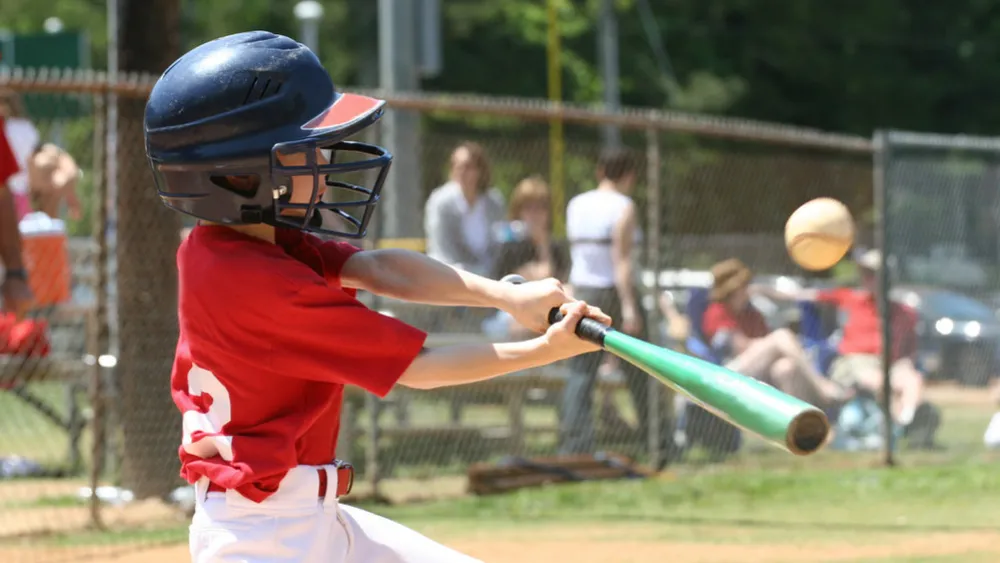




Family Health
Preventing Traumatic Brain Injury: How To Help Kids Play It Safe This Summer
Published: July 6, 2021

Many of us tend to think of football and other fall sports when we think about concussions and other head injuries. But softball and baseball are among the top five sports that cause the most head injuries, including traumatic brain injury (TBI) – a complex physiological process caused by a bump, blow or jolt to the head or body, resulting in microscopic damage to cells responsible for brain function. And many high school athletes – including those who only play fall sports – tend to train in the summer, too, which increases their exposure to potentially dangerous contact with other players or equipment.
Other summer sports and activities with red flag warnings include:
- Playground play (especially for children 14 and younger)
- Cycling
- Skateboarding
- Swimming
- Trampoline play
- Horseback riding
- Golf
- Activity on exercise equipment
As summer heats up, there are some things parents may want to keep in mind.
Signs and Symptoms of Mild Brain Injuries
Mild TBI and concussions don’t always involve direct trauma to the head. They can happen as a result of abrupt acceleration or sudden stopping of the head (body-to-body collision).
While most people might associate all brain injuries with loss of consciousness, that doesn’t always occur. When it comes to mild brain injuries, there may be a rapid or delayed onset (appearing hours to days after an injury) of signs and symptoms that are typically grouped into four main categories:
Physical
- Dizziness
- Tiredness
- Headache
- Sensitivity to light
Emotional
- Anxiety
- Excessive crying or sadness
- Irritability
Cognitive
- Brain fog
- Extreme fatigue
- Poor concentration or short-term memory
Sleep
- Insomnia
- Increased need for sleep
Although these signs and symptoms are usually short-lived and resolve in sequential manner, some may be prolonged. Rest assured that prolonged symptoms aren’t necessarily related to more severe injury and vary significantly between individuals.
Please note: It’s critical that you seek emergency care immediately if alcohol or drugs – including blood thinners – were consumed prior to a head injury, or you happen to observe any of the following symptoms:
- Amnesia
- Extreme personality change
- Paralysis or muscle weakness in a specific location (left side of face, right arm, tongue, etc.)
- Progressive nausea or vomiting
Treatment and Recovery
Symptoms associated with mild brain injuries often reflect a functional disturbance rather than a structural injury. So, while these types of injuries won’t generally appear on standard neuroimaging, seeking medical care for a concerning bump, blow or jolt is important, as early diagnosis is key to recovery.
When it comes to treatment, mild brain injuries usually require only:
- Rest (avoiding lots of physical activity and excessive stimulation in the form of prolonged screen time, reading, homework and noisy/busy environments)
- Over-the-counter medication for headaches
- Caregiver supervision
- Follow-up appointments with a primary care provider or athletic trainer
- A gradual return to work, play and other activities
If a visit with a neurologist is necessary, patients can expect:
- A careful review of their health history and mechanism of injury
- An assessment of their cognitive function, cranial nerves, strength, reflexes, sensation and balance
- Additional testing, which may involve:
- Computed tomography (CT) scan or Magnetic resonance imaging (MRI) scan of brain
- Electroencephalogram (EEG)
- Formal neuropsychological testing
The most important part of any treatment plan? Patience! Almost all patients who suffer mild brain injuries will fully recover with time.
Risk Factors and Prevention Strategies
While all young athletes run the risk of a concussion or mild TBI, they may be at even higher risk if they:
- Have a history of concussions
- Have been diagnosed with anxiety or depression
- Suffer from migraines
- Are female (Girls are twice as likely as boys to suffer concussions in similar sports, such as soccer.)
- Play sports associated with the highest rates of concussion
For boys:
- Football
- Hockey
- Lacrosse
- Wrestling
- Soccer
For girls:
- Soccer
- Basketball
- Lacrosse
- Cheerleading
- Volleyball
The American Association of Neurological Surgeons recommends plenty of ways to play it safe:
- Wear helmets approved by the American Society for Testing and Materials and ensure a proper fit.
- Supervise young children at all times.
- Don’t dive into water less than 12 feet deep, and practice safe swimming. Follow all water park and swimming pool rules.
- Wear sport-appropriate clothing that doesn’t interfere with vision and movement.
- Don’t participate in sports or recreational activities when ill or extremely tired.
- Encourage children to stay alert at all times while discouraging the use of headphones and other distractions.
- Perform regular safety checks of sports fields and equipment.
- Replace damaged equipment and safety gear. Many helmets are designed for a single impact only, meaning proper protection isn’t guaranteed after the first significant hit or fall.
It’s important that all athletes begin a first-time sport slowly and know their limitations. Start with the basics, learning the fundamentals from an expert in the sport. Patience and preparation can go a long way in terms of injury prevention.
For other tips on playing it safe this summer, reach out to your primary care provider, who can also ensure that your child is healthy enough to begin a new sport or activity.
More Resources
- Learn more about neurology at Methodist.
- Learn how to spot common concussion symptoms.
- Learn more about Methodist’s concussion program.
- Learn more about physical, occupational and speech therapy at Methodist.
- Find a primary care provider or pediatrician.


